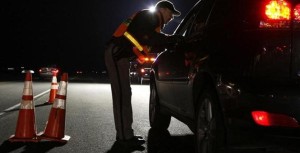Orange County DUI Checkpoint in Dana Point on April 3, 2015
Orange County DUI Checkpoint in Dana Point on April 3, 2015: Our Orange County DUI Lawyers have learned that the Orange County Sheriff’s Department DUI Taskforce will be conducting a Orange County DUI Checkpoint in Dana Point on April 3, 2015 in the City of Dana Point between the hours of 6:00 p.m. and 3:00 a.m.
DUI checkpoints are not an effective means to remove those driving impaired from the road, statistics prove, but are a money generating operation from funds from the Federal US Department of Transportation through NHTSA (National Highway Traffic Safety Administration), the State of California Office of Traffic Safety, MADD funding, and overtime for police officers, and income from impound fees from those driving with violations other than DUI.
According to Orange County DUI Attorney Robert Miller, the arrest rate for most DUI checkpoints is 0% to 3%, compared with the arrest rate for saturation patrols (officers driving looking for those impaired), which can be as much as 10 times higher. However, police agencies say that as long as the funding remains as it is, the DUI checkpoints, which take officers off the road who can arrest those impaired or drunk, continues, as a “public awareness measure”. That matches what law enforcement stated for this Orange County DUI Checkpoint in Dana Point on April 3, 2015.
WHY DOES LAW ENFORCEMENT HAVE ORANGE COUNTY DUI CHECKPOINTS?
DUI Checkpoints, including the Orange County DUI Checkpoint in Dana Point on April 3, 2015, are even admitted by law enforcement to be less effective than other means of removing drunk drivers from the road. But, even though DUI checkpoints don’t work, police state they had a deterrent effect preventing people from driving in the first place. The truth is that funding in grants from the California Office of Traffic Safety (OTS), MADD, and the Federal Government ensure DUI checkpoints are used first before other, more effective measures.
ARE DUI CHECKPOINTS LEGAL?
The US Supreme Court, as well as the law in California, makes DUI checkpoints legal, as long as they follow certain criteria, including:
- Decision making by supervisors: This is important to ensure that checkpoints aren’t set up in “arbitrary and capricious” locations. The court didn’t say so, but we’re guessing they wanted to avoid any accusations of racial profiling.
- Limits on discretion of field officers: The theme of distrust of the officer continues. Strict procedures and a random selection of drivers according to a preset pattern (every third driver, for example) are suggested to avoid abuse.
- Maintenance of safety conditions: We’re not sure how it applies to constitutionality, but the court wanted lots of bright lights and signs.
- Reasonable location: The location should be based on relevant factors, such as areas with high incidences of DUI or DUI accidents.
- Time and duration: There are no hard and fast rules, but the timing should be set to optimize the effectiveness of the checkpoint. In other words, put ’em up when the drunks are out.
- Indicia of official nature of roadblock: This is more babble about bright lights and warning signs. They do mention that the lights and signage should be visible for the sake of notification to the drivers. Drivers also can’t be pulled over for avoiding the checkpoint, unless they violate a law to do so.
- Length and nature of detention: The time of the stop should be minimized as to infringe on a person’s rights as little as possible. That means peek at the eyes, smell for booze, and look for cans. If there are no signs of intoxication, the driver should be let go. If they look or smell drunk, field sobriety tests are appropriate.
- Advance publicity: Ingersoll was in favor of advance publicity. It referred to the deterrent effect and stated that the notice minimizes intrusiveness to a person’s rights. In 1993, the court in People v. Banks stated that publicity was not a requirement, but it certainly helps.

